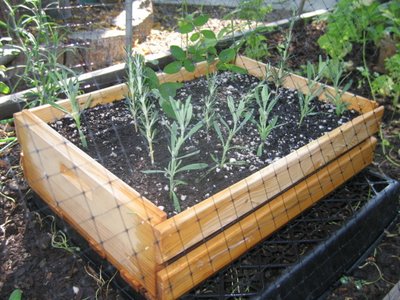Their are a lot of things we can grow to eat in the San Francisco Bay Area during our cool season. My raised beds will be in full use:
Bed #4

Stock Flowers were started from seed using
Uncle Toms Method. Thats a dill plant going to seed in the center. Thyme plants are established in the front corneres. Cereal Rye(cover crop) seeds were directly broadcast into the rear half of this bed. I should have started them in a flat, then transplanted on 5" centers, but I skipped that step. Just being lazy really............but I like to call it an experiment.
Bed #5
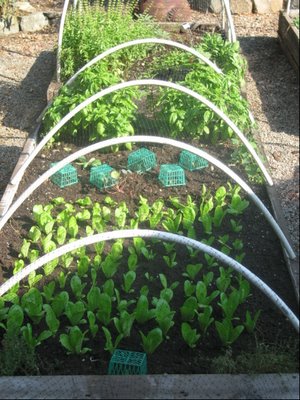
Lettuce seed was broadcast in a flat, then those seedlings were transplanted into a second flat on 1 1/2" centers, then when they were about 3" tall they were transplanted into this bed. Calendula Flowers were started from seed using Uncle Toms Method. Basil is still producing in the rear. Thyme plants that I started from seed last fall, were transplanted to the front corners.
Bed #6

Parsley seed were broadcast directly into the right/center portion of this bed. Balck Emmer Wheat seeds are being started in a flat, to be transplanted into the back half of this bed in a few weeks. Lemon Basil is going to seed the the front left corner, and a few volunteer calendula are getting big in the right front corner, hiding another oregano bush, which will go dormant for the winter.
Bed #7
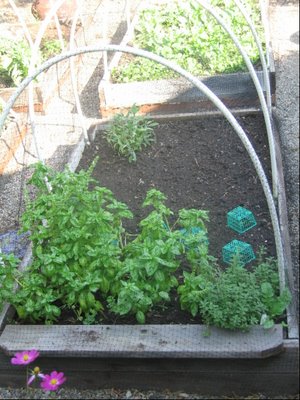
Fava Beans were sown directly into this bed on 8" centers. Stock flowers were started using Uncle Tom's Method. I have a sage bush growing in the back left corner, and some oregano in the right front corner, and some basil still producing.
Bed #8
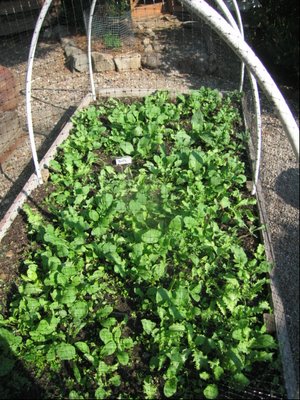
This is where I broadcast Beet and Scallion seeds a few weeks ago, but it looks like the volunteer's dandelion, arugula and curly frisse are taking over, and I decided to let the more determined veggies win. Maybe I'll get a few beets here and there. I forgot that beet seeds, are actually little containers with multiple seeds inside them, so I am doing a little experiment right now, starting some beet seeds using Uncle Toms Method, to see how many seedlings come out of each seed. I know beets are recommended to be direct sown, but I will attempt to get these seedlings transplanted into a bed, and hopefully get some beets this way.
Bed #9
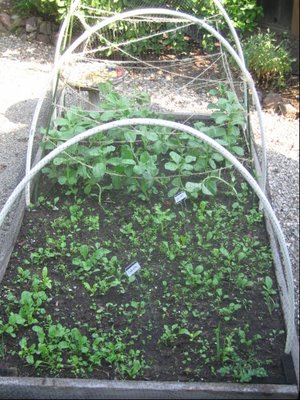
Fava Beans (sown on August 25th and already about a foot tall), Carrots, Cilantro seeds (just about 1 " tall now) were all direcly sown into this bed.








